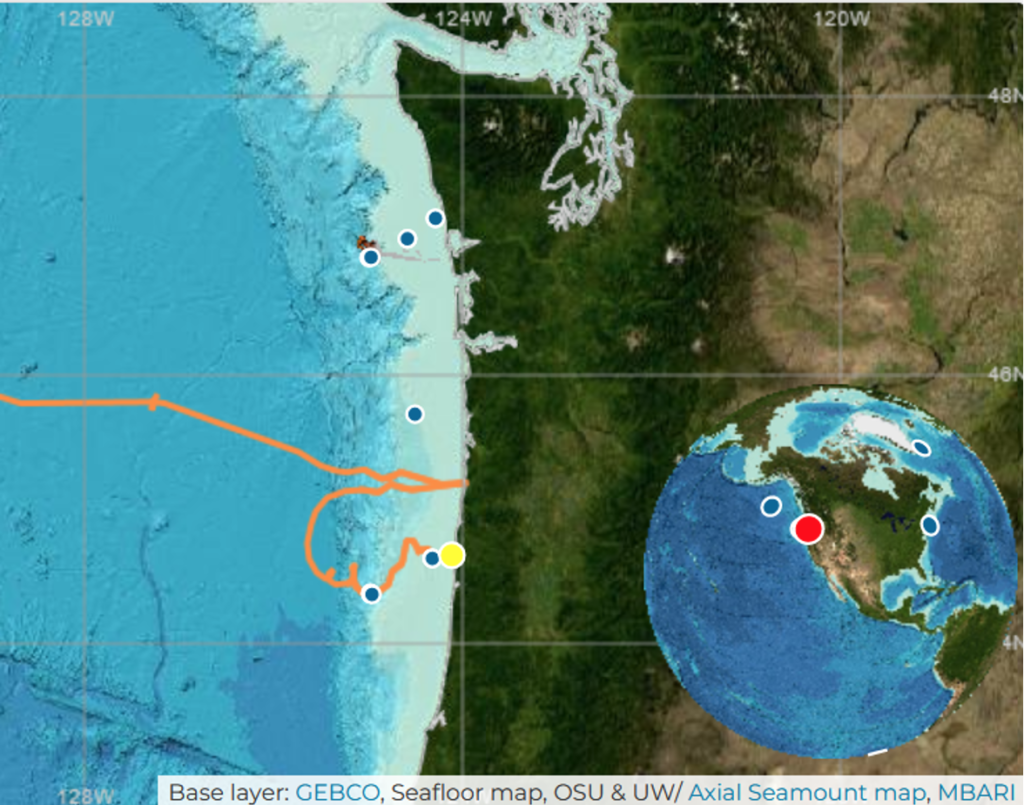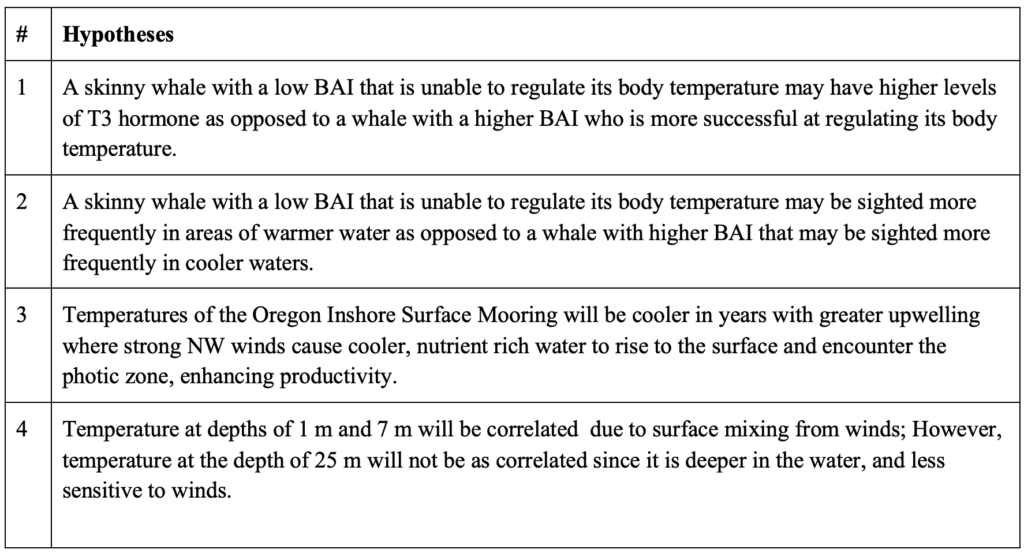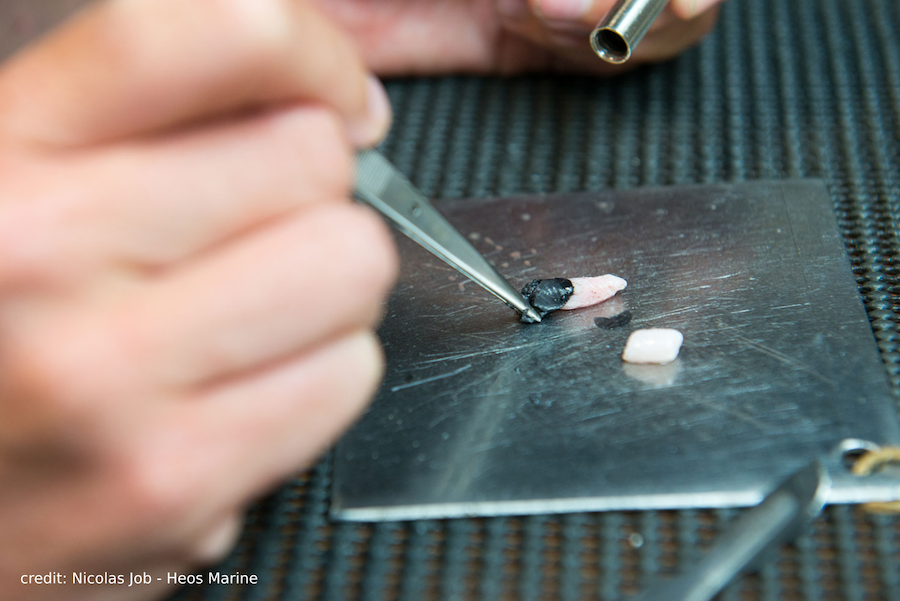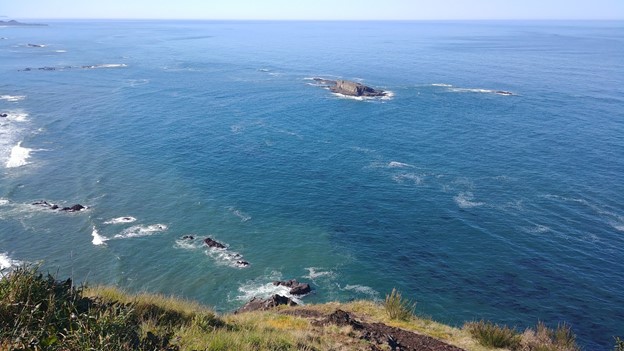Allison Dawn, GEMM Lab Master’s student, OSU Department of Fisheries, Wildlife and Conservation Sciences, Geospatial Ecology of Marine Megafauna Lab
Hello, GEMM Lab blog readers! I am writing to you from the Port Orford Field Station, aka the “South Coast Outpost” as our esteemed field station manager, Tom Calvanese, calls it. I am so excited to be back this year leading a new group of interns into our 8th consecutive year of the integrated TOPAZ and JASPER projects. The field station is much busier than last year, as it houses not only our team of five, but an additional five other interns representing OSU, either through NSF REU projects or MSI internships. I continue to be amazed at the depth and breadth of work that is facilitated by the field station, from our gray whale foraging observations to urchin gonad analysis to creative community engagement efforts and even sustainable seafood distribution. The Port Orford Field Station is truly a haven for those passionate about coastal Oregon conservation.
The whale team has just wrapped up our first full week of training and I am excited to share a few updates. For those who are not familiar with the project, in addition to our busy field work projects in Newport (GRANITE & HALO), the GEMM lab has also been anchored in Port Orford every summer for the past eight years. With Leigh at the metaphorical helm, and a master’s student as first Mate (previously Florence Sullivan followed by Lisa Hildebrand), we have established a legacy of gray whale research, local collaborations, science communication and hands-on learning for budding young scientists. From this work we have investigated vessel disturbance, prey preference and potential trophic cascades, and now my research aims to investigate the environmental drivers of prey abundance. Many exciting developments are underway that you will learn more about in the coming weeks, but first I’d like to introduce the interns that are helping make this year possible!
Figure 1. Zoe takes her first peek at Redfish Rocks Marine Reserve through the theodolite.
First, I’d like to introduce you to Zoe Sax. Zoe is the first REU student to intern on the whale team for the Port Orford Project. She is a rising senior at Drake University majoring in Environmental Science with a Zoology and Conservation Science minor. Last spring, Zoe interned at the Blank Park Zoo where she worked with a range of mammals – even rhinos! This is her first marine mammal internship, but in just a few short weeks, Zoe has demonstrated enthusiasm for fieldwork’s most challenging tasks as well as perseverance through tricky Python/R code. Prior to our arrival at the Field Station, she has been working with me in Newport investigating whether our secchi disk data can serve as a proxy for chlorophyll-a, to ultimately understand patterns of visibility and nutrient abundance. I will let her tell you more about her project’s journey and preliminary results in her blog next week!
Figure 2. Nichola smiles through kayak sampling training day while learning how to use the GPS to navigate and stay on station in Tichenor Cove.
Next up is Nichola Gregory. Nichola is an OSU alumni with a bachelors in Ocean Science and a minor in Biology and Ecology. She is currently taking a self-paced certification course in GIS at Portland Community College and is preparing to apply for graduate schools this fall. With a background in phytoplankton identification using the Imaging Flow Cytobot (IFCb) in the Seascape Ecology Lab at OSU, Nichola has a passion for the tools that allow us to investigate smaller marine organisms. She is particularly excited to explore data from our new oceanographic sensor and strengthen her coding skills to help understand the relationships between nutrients and zooplankton. Once a competitive swimmer, she is also excited to be strengthening her water sport skillset and has met every new on-the-water task with a great attitude, humor, and attention to detail.
Figure 3. Luke investigates the season’s first gammarid prey under a microscope during zooplankton ID training.
Luke Donaldson is one of the team’s two interns who grew up on the southern Oregon Coast, where he recently graduated from Coquille High School. He is eager for new challenges before he enters his freshman year at the OSU-Cascades campus as a major in Natural Resources. Luke has already established himself as a keen observer. First, he spotted a river otter running into the surf on our team bonding beach walk, and then he spotted the first blow of the season during our kayak sampling training day! From bush-whacking in search of lamprey populations at South Slough Reserve, green crab trapping, and even hay-baling, Luke’s previous volunteer and internship work has equipped him with transferable skills that I know will be integral in the weeks to come.
Figure 4. Charlie looks toward MR17 where we had just observed the first gray whale of the season surface.
Last, but certainly not least – our other “coastie” intern is Charlie Ells. Charlie graduated from Bandon High School this past spring and plans to attend the University of Oregon as an Environmental Science major. He has earned the nickname “Mr. Safety” from his peers due to his commitment to fieldwork best practices and his catchphrase “Never turn your back on the ocean”. He has taken great initiative in learning every new task, and his familiarity with the water has made him an essential part of the team as an excellent kayak navigator. Charlie already has a demonstrated passion for conservation and is eager to gain experiences that will help him explore his future career pathways.
Figure 5. The 2022 TOPAZ / JASPER team after a long yet rewarding morning of kayak sampling training.
With week one under our belts, I know I speak for the whole team when I say we are as excited as ever for the season. With the exception of one foggy day, we have been fortunate to have favorable weather conditions that I hope will continue. Collaborators in Port Orford and I have noticed there have been new kelp patches in Mill Rocks where we spotted our first whale of the season, which makes us hopeful there will be some quality zooplankton prey in the area for our PCFG whales. This week, the team will tackle Basic Life Safety Training (BLS) and complete several more cliff/kayak practice days to prepare us for the first week of August where we will officially begin data collection. Stay tuned for more exciting updates from the Port Orford team!
Did you enjoy this blog? Want to learn more about marine life, research and conservation? Subscribe to our blog and get weekly updates and more! Just add your name into the subscribe box below!











